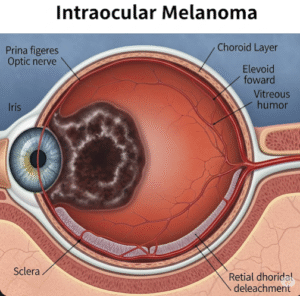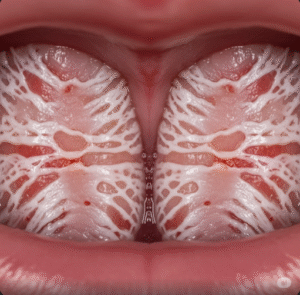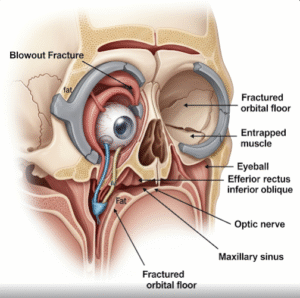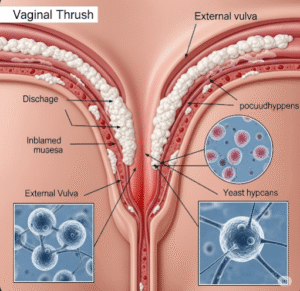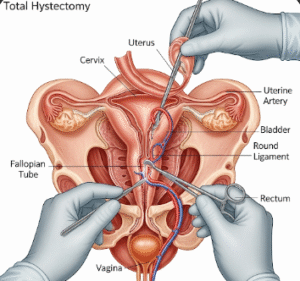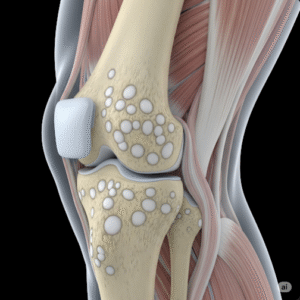Overview
Weber Syndrome is a rare neurological condition resulting from a stroke or lesion in the midbrain, specifically affecting the oculomotor nerve and the corticospinal tract. It is considered one of the brainstem stroke syndromes and is typically caused by an infarction in the territory of the posterior cerebral artery. The condition leads to a combination of eye movement abnormalities and weakness or paralysis on the opposite side of the body.
What is Weber Syndrome?
Weber Syndrome is a type of midbrain stroke syndrome that occurs when the oculomotor nerve (cranial nerve III) and the corticospinal tract are damaged. This causes ipsilateral oculomotor nerve palsy (drooping eyelid, dilated pupil, and eye movement difficulty on the same side as the lesion) and contralateral hemiparesis or hemiplegia (weakness or paralysis on the opposite side of the body). The condition is usually caused by a vascular event, such as an infarct in the paramedian branches of the posterior cerebral artery.
Symptoms
Symptoms of Weber Syndrome present suddenly and typically include:
- Ptosis (drooping eyelid) on the side of the lesion
- Dilated pupil and eye turned outward and downward due to third nerve palsy
- Double vision (diplopia)
- Contralateral hemiparesis or hemiplegia (weakness or paralysis of the limbs on the opposite side)
- Facial muscle weakness on the opposite side
- Speech difficulties or slurred speech
- Difficulty walking due to motor impairment
Causes
The most common cause of Weber Syndrome is:
- Ischemic stroke affecting the midbrain, especially involving the posterior cerebral artery
Other causes may include: - Hemorrhagic stroke
- Brainstem tumors
- Trauma or brainstem compression
- Multiple sclerosis or other demyelinating diseases
- Infections that involve the central nervous system
Risk Factors
Weber Syndrome shares risk factors with other types of stroke and brainstem injury, including:
- Hypertension (high blood pressure)
- Atherosclerosis
- Diabetes mellitus
- Smoking
- Heart disease (especially atrial fibrillation)
- High cholesterol
- Older age
- Previous history of stroke or transient ischemic attacks (TIAs)
Complications
If left untreated, Weber Syndrome can lead to:
- Permanent paralysis or motor deficits
- Chronic vision or eye movement abnormalities
- Difficulty with daily activities and mobility
- Increased risk of recurrent strokes
- Swallowing and speech difficulties
- Psychological and emotional challenges due to neurological impairment
Prevention
Preventing Weber Syndrome primarily involves managing vascular risk factors to reduce stroke risk:
- Control blood pressure, diabetes, and cholesterol levels
- Avoid smoking and limit alcohol intake
- Maintain a healthy weight and diet
- Engage in regular physical activity
- Take prescribed medications for atrial fibrillation or blood thinning, if at risk
- Seek immediate medical attention for symptoms of stroke to prevent permanent damage
Treatment Options in Korea
South Korea is well-equipped with advanced neurology and stroke care services, offering timely and specialized treatment for Weber Syndrome. Key treatment options include:
- Emergency stroke management, including thrombolytic therapy (tPA) if diagnosed within a critical time window
- MRI and CT imaging for precise localization of the lesion
- Antiplatelet or anticoagulant medications to prevent further strokes
- Rehabilitation therapy, including physical, occupational, and speech therapy to address motor and language deficits
- Ophthalmology care for managing third nerve palsy and vision issues
- Comprehensive stroke units in hospitals like Seoul National University Hospital, Asan Medical Center, and Samsung Medical Center
Patients benefit from Korea’s integrated rehabilitation services and cutting-edge stroke protocols, which promote optimal recovery and reduce the risk of complications.


